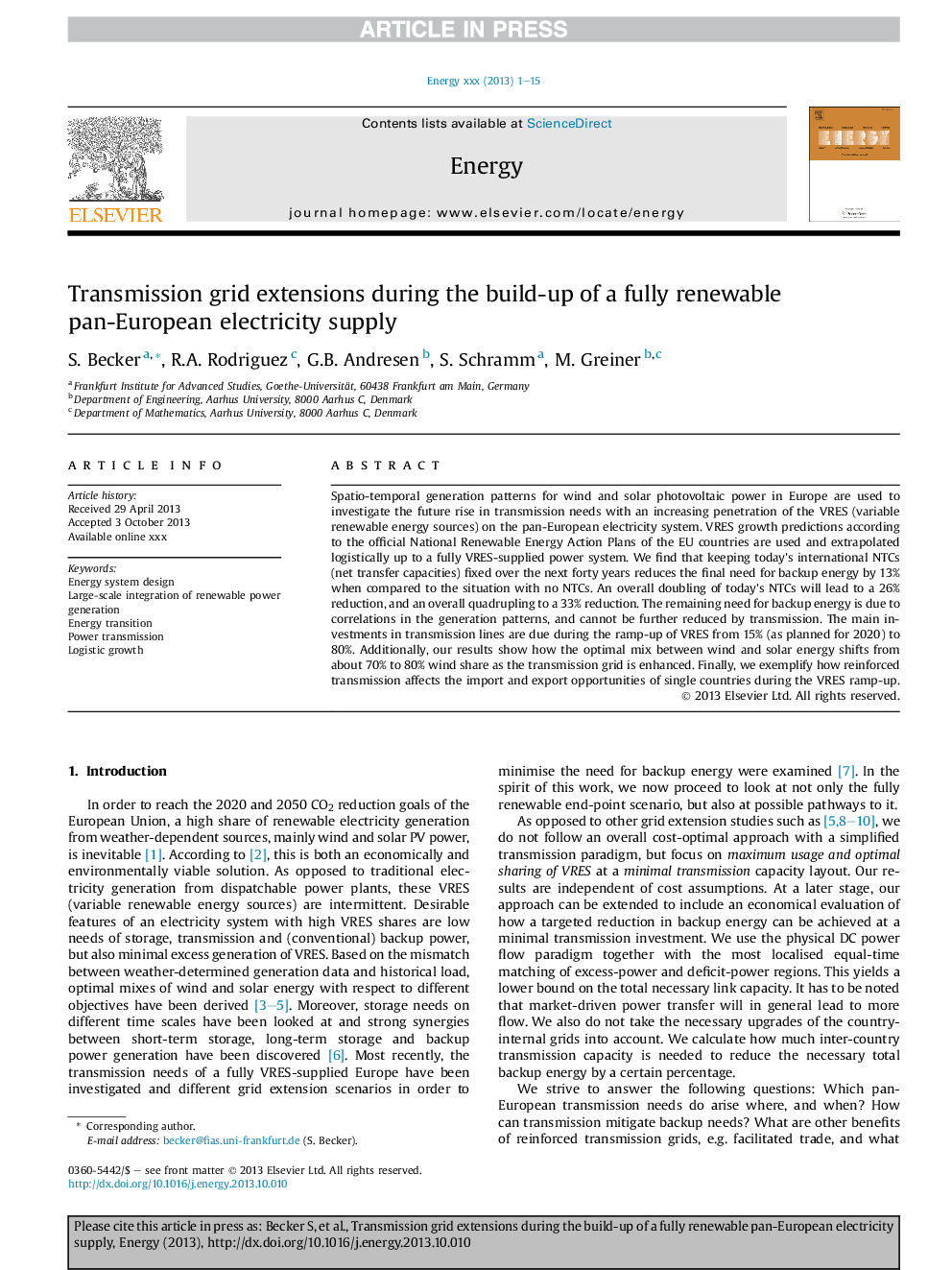| Article ID | Journal | Published Year | Pages | File Type |
|---|---|---|---|---|
| 8078741 | Energy | 2014 | 15 Pages |
Abstract
Spatio-temporal generation patterns for wind and solar photovoltaic power in Europe are used to investigate the future rise in transmission needs with an increasing penetration of the VRES (variable renewable energy sources) on the pan-European electricity system. VRES growth predictions according to the official National Renewable Energy Action Plans of the EU countries are used and extrapolated logistically up to a fully VRES-supplied power system. We find that keeping today's international NTCs (net transfer capacities) fixed over the next forty years reduces the final need for backup energy by 13% when compared to the situation with no NTCs. An overall doubling of today's NTCs will lead to a 26% reduction, and an overall quadrupling to a 33% reduction. The remaining need for backup energy is due to correlations in the generation patterns, and cannot be further reduced by transmission. The main investments in transmission lines are due during the ramp-up of VRES from 15% (as planned for 2020) to 80%. Additionally, our results show how the optimal mix between wind and solar energy shifts from about 70% to 80% wind share as the transmission grid is enhanced. Finally, we exemplify how reinforced transmission affects the import and export opportunities of single countries during the VRES ramp-up.
Keywords
Related Topics
Physical Sciences and Engineering
Energy
Energy (General)
Authors
S. Becker, R.A. Rodriguez, G.B. Andresen, S. Schramm, M. Greiner,
